#national bagel day
Text

🥯 Happy National Bagel Day! 🥯
9 notes
·
View notes
Text

#London#hackney#England#photography#mine#salt beef#Jewish neighbourhood#jewish#bagels#bageltime#bagelmania#national bagel day#travel#low exposure#iphone photography#iPhone 14 pro max#grey london
9 notes
·
View notes
Photo

Happy National Bagel Day!
2 notes
·
View notes
Text
01/15/2024 is Blue Monday 💙🌎, Day of International Recognition 🇭🇷, National Hat Day 🎩🇺🇸, National Strawberry Ice Cream Day 🍨🇺🇸, National Bagel Day 🥯🇺🇸, Martin Luther King Jr. Day 🇺🇸
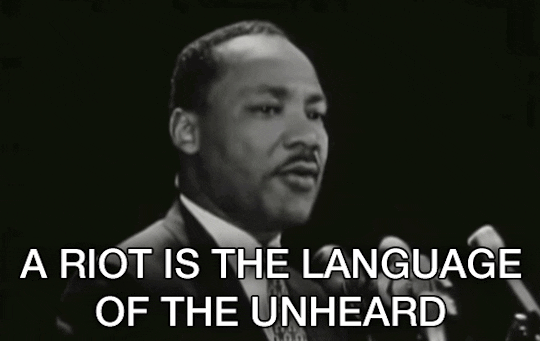
#blue monday#day of international recognition#national hat day#national strawberry ice cream day#national bagel day#martin luther king jr day
1 note
·
View note
Text
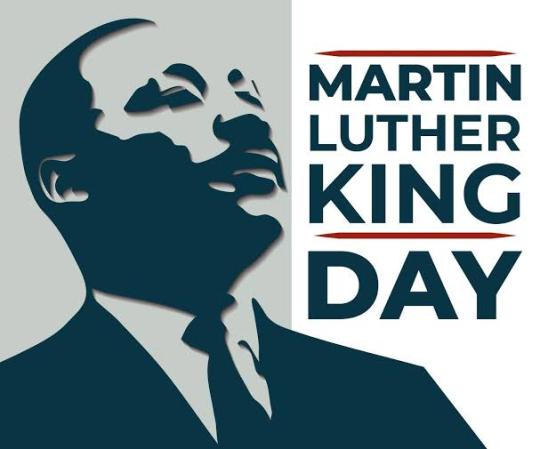
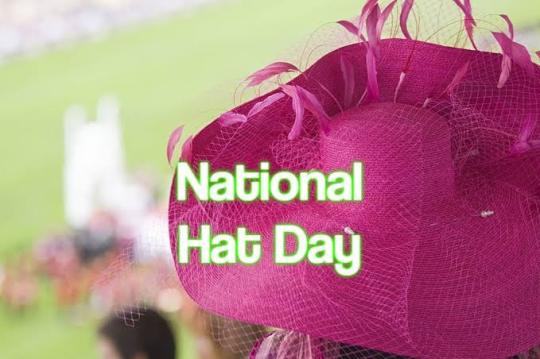
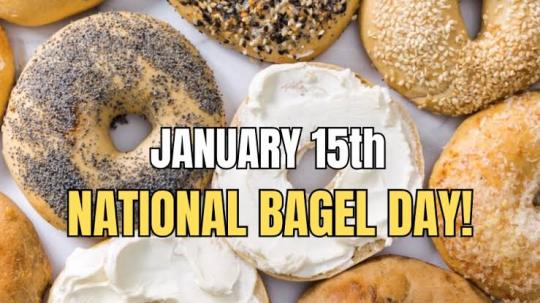
Today is 15th of January.
Today is Martin Luther King Day, National Hat Day, National Bagel Day.
0 notes
Text

FOR NATIONAL SANDWICH DAY 🥪 🥯
(I’m so sad that I realised a day late!)
#sandwiches#national sandwich day#ana posts#moodboards#aesthetic#bagels#sandwich#food#delicious#yum!!
53 notes
·
View notes
Text
Happy National Cheese Lover's Day y'all
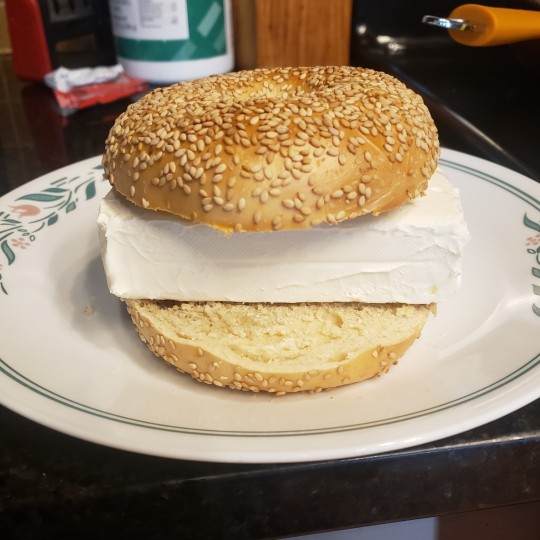
#National cheese lovers day#Cheese#Cheese is love#Cheese is life#I love cheese#cream cheese bagel#Bagel time
224 notes
·
View notes
Text
Going on a vengeful murder path bc the cats got into the bagels I bought yesterday & chewed at the bag, which let gnats get inside & it was absolutely SWARMING. I had to throw the whole thing away, & after taking out the trash I went on a fucking murder run at the remaining gnats with my bug zapper
There are a few remaining. But not forever.
#speculation nation#bugs ment/#like at least it got me to take out my trash but that was like $4 wasted#and i have to figure out something else to have for breakfast...#i shouldve just put the bagels away but my fridge is very full rn...#i really need to clean it out...#maybe later today. if i have energy after work.#in other news that bug zapper is honestly the best thing i own#Sure an apple cider vinegar trap works wonders. but it is nothing short of therapeutic to absolutely demolish the fuckers#who are ruining my life. By Hand.#some got into my latte the other day 😭😭😭😭 and i didnt notice until after id drank most of it 😭😭😭😭😭#i hate them so fucking much. theyre so goddamn insistent. fuck those guys.
1 note
·
View note
Text
#Bagel and Lox#bagel and lox recipe#bagel and lox origin#what is bagel and lox#national bagel and lox day#bagel and lox calories#how to make bagel and lox
0 notes
Text
jk i’m Awake
#im so nauseous i could cry 👍🏻#i haven’t jumped up a dosage in the meds like you’re technically supposed to with the course of them bc. national shortages lol#like the idea is you go up one dose every month#but already the second month they didn’t have mine so they were like. sure np just skip one and go up another one#that was when i was the most nauseous in all of existence for 6/7 days of the week it was kind of miserable ngl#anyway then the next month i was like fine i’ll stay on this one bc. i’ll catch up where im technically supposed to be and also#side effects were not doing so hot so i was like fine i’ll adjust to this one and go up next time#and then at the beginning of this round this month i was like k i’ll go up and they prescribed ir but we couldn’t get the meds#bc shortages eeeeeverywhere so. i’m on the same one which is still doing its job and whatever and thankfully no escalating side effects#i’m just. nauseous for the first few days lol not nearly as bad as ir was at first but. not great and then gets bad when i eat sometimes lo#hence me eating bagels <3 they haven’t failed me yet <3#sorry this got ranty#point being it’s 430am and i’m NAUSEOUS
0 notes
Text
Yellow - Mackenzie Arnold x reader

You woke up to a smidge of light peering through your window and a tight arm wrapped around your waist. You look at the time on your watch and it’s a little past 7:30 so you know that Mackenzie isn’t going to wake up for at least another hour. You turn over slightly and give her a soft kiss on the cheek, which causes the slightly older than you to scrunch her nose and turn over. This loosens her arm around you a little so it’s easy for you to escape. Once out of the tight hold, you decide you are going to go on a walk and to grab some coffee and bagels on the way home. After slipping on your last shoe and leaving a note on your pillow, you started your mini adventure.
You’d just moved to England from the US after scoring a deal with Arsenal so you are still getting used to the new country. Thankfully, since you and Mackenzie’s clubs aren’t that far from each other, you still see each other regularly. As you walk down the street, you see the familiar but old style shopping village you’ve grown to love. Turns out the country markets are on today and that makes you happy to explore peoples little handmade trinkets and fresh produce.
You first stop at a small flower stall and greet the old couple sitting in their slightly beaten up camping chairs, sharing a warm cup of coffee. All the different colours and aromas makes your heart burst with happiness, especially when you see this one shade of purple. It reminds you of the first time you saw Mackenzie in your national teams goalkeeper jersey. Having your favourite girl kitted out in your favourite colour did something to you. You didn’t realise how long you were staring at the flowers until you saw the old lady stand in front of you.
“You can just buy one if you want. I know a whole bunch is a bit much sometimes” the old lady offers.
You decide to buy three stems of the flower and she wraps it up nice and cute for you. You thank her and decide to give here a little bit extra for the trouble.
You walk down the next couple of stalls and see one of the new couples at Arsenal, Caitlin Foord and Katie McCabe. You talk to them for a while until you hear your phone ringing and see it’s Mackenzie. You bid them goodbye and that you’ll see them tomorrow for games night at Viv and Beth’s house. You quickly answer your phone and see Mackenzie FaceTiming you.
“Hey bubs, did you just wake up?” You ask as you look at a handmade jewellery stall.
“I did and you weren’t here. Where are you?” Mackenzie asks, mumbling into the comfy and fluffy blanket.
“I went down the street to get us some coffee and it turns out the markets are on. So I’m just having a look around, trying to familiarise myself with the area”
“Can you hurry? I’m missing out on my cuddles”
“I’ll be as quick as I can bubs. I love you”
“I love you more love. See you soon”
You look around the jewellery and see a pair of sunflower stud earrings. You pick them up and smile at the memory behind sunflowers.
On your four month anniversary date, Mackenzie took you to a sunflower farm in you hometown of Brisbane and you were in heaven. They had a clear patch where you could have a picnic and you both packed each others favourite foods and drinks. The patch was on top of a hill, over looking the beautiful mountains and the city below. You both had finished eating and you moved to sit in between her legs, watching as the sun slowing hide behind the high rise buildings, leaving behind a glow of oranges and pinks. It honestly made Mackenzie look like a goddess in your opinion. After a moment of comfortable silence, she told you those three words you have also had on the tip of your tongue also. You both sealed it with a kiss (or make out session) under the setting sun and it was truly a day you’ll never forget.
You give the earrings, along with the matching necklace, to the young girl to pay and again, told her to keep the change. She thanks you a lot before you head off down to the other stalls. You buy some more ironically coloured flowers, some matched Mackenzie’s eyes and one colour (in your brain), matching the way she smiles ever so lovingly at you.
You reach your final stall and see the most gorgeous yellow daffodils you’ve seen. Immediately buying them, you check the time and Mackenzie is texting you asking if you’ve ran away with the circus and that her ‘cuddle-o-meter’ is nearly running out so she’s going to die. You roll your eyes at the dramatics but decide to get the things you had come out for, coffee and bagels. You make a u-turn to your favourite coffee shop and order the usual for you both with cream cheese bagels.
You race home as fast as you can with two coffees and a bag full of flowers. Mackenzie hears the front door unlock and immediately goes to help you. Her eyes wide at the amount of flowers in your bag.
“What’s all the flowers for baby?” Mackenzie questions.
“I’ll explain later but please take the coffee”
You both sit on the couch and eat your bagels while you tell Mackenzie about all the stalls at the markets. Mackenzie’s heart swells up at how excited you get over the little things and it makes her smile even more (if that was possible).
“Okay presents time!” You say practically jumping out of your seat.
You explain all meanings behind the purple flowers to the sunflower earrings and necklace set and how Mackenzie hates earrings so you’ll wear them and she can have the necklace. Not once did Mackenzie get distracted or even think about not listening to you rave on about everything you bought her and the meanings behind them.
You finally got to the yellow daffodils. You turn and take Mackenzie’s hands in yours and she immediately tenses a little. You rub your thumb on her hand and she relaxes slightly.
“Mum used to tell me that yellow is the happiest colour. She used to say ‘yellow is something, or someone, that makes you so head over heels happy that you don’t want it to end’. Ever since we’ve started dating, I knew you were it for me. You’re my soulmate, my yellow. You’re the safe place I call home”
It happens all at once. The bottom lip wobbles. The single tear falls down Mackenzie’s cheek. The bone crunching hug that sends you flying back, hitting the soft cushions of the couch. You feel your shirt getting wet and you pull Mackenzie’s head up to see her with tears streaming down her face.
“Oh baby, I didn’t mean to make you cry” you mumble, wiping tears from her cheek.
“Marry me?”
You thought you heard wrong or didn’t hear her at all. When you don’t say anything, Mackenzie gets up from your lap embarrassed then you realise what she said. She turns to walk away when you grab her wrist, making Mackenzie turn her head to you.
“Yes”
“Yes?”
“Yes I’ll marry you baby!”
Mackenzie falls straight back on top of you and kisses you passionately. You pull her close when she pulls back quickly.
“The ring! You need your ring!” She sprints into the bedroom and before you could get up, she sprints right back out.
Mackenzie kneels on the floor in front of you before lifting your left hand and sliding the ring on. You tell her to stay there and you take a quick photo. She cuddles back into your arms and you cannot stop looking at the new sparkling piece of jewellery on your left hand.
“It’s gorgeous”
“Just like it’s owner”
“You cheese ball”
London being London, it starts to rain quite heavily so you both decide to cuddle on the couch and watch movies all day.
Who knew going for an early morning stroll on a day off would end up with you being engaged to the love of your life.
…………………………………………………………………………………………
A few weeks later…




liked by mackenziearnold, leahwilliamson, bethmead, matildas, stephcatley and 187,394 others
itsyn25: ‘yellow is something, or someone, that makes you so head over heels happy that you don’t want it to end’ 💍
view all 22,845 comments…
mackenziearnold: home ❤️🥺
// itsyn25: forever and always bubs ♾️
leahwilliamson: yay!! So happy for you both 😭🥹
// itsyn25: i love youuuu 🥹
caitlinfoord: I suppose you can join the club now…
// omg thank you! I totally haven’t been waiting 5 years or anything… 🥲😁
stephcatley: maid of honour dibs! 🙋♀️🤩
// itsyn25: I suppose 🙄
#womens soccer#woso soccer#woso#woso imagine#woso x reader#woso imagines#matildas#auswnt#mackenzie arnold x reader
497 notes
·
View notes
Photo
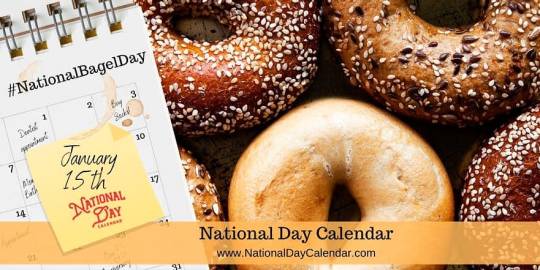
Happy National Bagel Day!
0 notes
Note
loving your falafel research saga and just wanted to ask - something I remember hearing about falafel is that while Israeli culture definitely appropriated it, the concept of serving it in pita bread with salads, tahini etc. is a specifically Israeli twist on the dish. I wonder if you found/know anything about that?
The short answer is: it's not impossible, but I don't think there's any way to tell for sure. The long answer is:
The most prominent claim I've heard of this nature is specifically that Yemeni Jews (who had immigrated to Israel under 'right of return' laws and were Israeli citizens) invented the concept of serving falafel in "pita" bread in the 1930s—perhaps after they (in addition to Jews from Morocco or Syria) had brought falafel over and introduced it to Palestinians in the first place.
"Mizrahim brought falafel to Palestine"
This latter claim, which is purely nonsense (again... no such thing as Moroccan falafel!)—and which Joel Denker (linked above) repeats with no source or evidence—was able to arise because it was often Mizrahim who introduced Israelis to Palestinian food. Mizrahi falafel sellers in the early 20th century might run licensed falafel stands, or carry tins full of hot falafel on their backs and go from door to door selling them (see Shaul Stampfer on a Yemeni man doing this, "Bagel and Falafel: Two Iconic Jewish Foods and One Modern Jewish Identity," in Jews and their Foodways, p. 183; this Arabic source mentions a 1985 Arabic novel in which a falafel seller uses such a tin; Yael Raviv writes that "Running falafel stands had been popular with Yemenite immigrants to Palestine as early as the 1920s and ’30s," "Falafel: A National Icon," Gastronomica 3.3 (2003), p. 22).
On Mizrahi preparation of Palestinian food, Dafna Hirsch writes:
As Sami Zubaida notes, Middle Eastern foodways, while far from homogeneous, are nevertheless describable in a vocabulary and set of idioms that are “often comprehensible, if not familiar, to the socially diverse parties” [...]. Thus, for the Jews who arrived in Palestine from the Middle East, Palestinian Arab foods and foodways were “comprehensible, if not familiar,” even if some of the dishes were previously unknown to most of them. [...] They found nothing extraordinary or exotic in the consumption, preparation, and selling of foods from the Palestinian Arab kitchen. Therefore, it was often Mizrahi Jews who mediated local foods to Ashkenazi consumers, as street food vendors and restaurant owners. ("Urban Food Venues as Contact Zones between Arabs and Jews during the British Mandate Period," in Making Levantine Cuisine: Modern Foodways of the Eastern Mediterranean, p. 101).
Raviv concurs and furnishes a possible mechanism for this borrowing:
Other Mizrahi Jewish vendors sold falafel, which by the late 1930s had become quite prevalent and popular on the streets of Tel Aviv. [...] Tel Aviv had eight licensed Mizrahi falafel vendors by 1941 and others who sold falafel without a license. [FN: The Tel Aviv municipality granted vending license to people who could not make their living in any other way as a form of welfare.] Many of the vendors were of Yemenite origins, although falafel was unknown in Yemen. [FN: Many of the immigrants from Yemen arrived in Palestine via Egypt, so it is possible that they learned to prepare it there and then adjusted the recipe to the Palestinian version, which was made from chickpeas and not from fava beans (ṭaʿmiya). Shmuel Yefet, an Israeli falafel maker, tells about his father, Yosef Ben Aharon Yefet, who arrived in Palestine from Aden [Yemen] in the early 1920s and then traveled to Port Said in 1939. There he became acquainted with ṭaʿmiya, learned to prepare it, and then went back to Palestine and opened a falafel shop in Tel Aviv [youtube video].]*
But why claim that Yemeni Jews invented falafel (or at least that they had introduced it from Yemen), even though its adoption from Palestinian Arabs in the early days of the second Aliya, aka the 1920s (before Mizrahim had begun to immigrate in larger numbers; see Raviv, p. 20) was within living memory at this point (i.e. the 1950s)? Raviv notes that an increasing (I mean, actually she says new, which... lol) negative attitude towards Arabs in the wake of the Nakba (I mean... she says "War of Independence") created a new sense of urgency around de-Arabizing "Israeli" culture (p. 22). Its association with Mizrahi sellers allowed falafel to "be linked to Jewish immigrants who had come from the Middle East and Africa" and thus to "shed its Arab association in favor of an overarching Israeli identification" (p. 21).
Stampfer again:
On the one hand (with regard to immigrants from Eastern Europe), [falafel] underscored the break between immediate past East European Jewish foods and the new “Oriental” world of Eretz Israel.** At the same time, this food could be seen as a link with an (idealized) past. Among the Jewish public in Eretz Israel, Yemenite falafel was regarded as the most original and tastiest version. This is a bit odd, as falafel—whether in or out of a pita—was not a traditional Yemenite food, neither among Muslims nor among Jews. To understand the ascription of falafel to Yemenite Jews, it is necessary to consider their image. Yemenite Jews were widely regarded in the mid-20th century as the most faithful transmitters of a form of Jewish life that was closest to the biblical world—and if not the biblical world, at least the world of the Second Temple, which marked the last period of autonomous Jewish life in Eretz Israel. In this sense, eating “Yemenite” could be regarded as an act of bodily identification with the Zionist claim to the land of Israel. (p. 189)
So, when it's undeniable that a food is "Arab" or "Oriental" in origin, Zionists will often attribute it to Yemen, Syria, Morocco, Turkey, &c.—and especially to Jewish communities within these regions—because it cannot be permitted that Palestinians have a specific culture that differentiates them in any way from other "Arabs." A culinary culture based in the foodstuffs cultivated from this particular area of land would mean a tie and a claim to the land, which Zionist logic cannot allow Palestinians to possess. This is why you'll hear Zionists correct people who say "Palestinians" to say "Arab" instead, or suggest that Palestinians should just scooch over into other "Arab" countries because it would make no difference to them. Raviv's conclusion that the attribution of falafel to Yemeni immigrants is an effort to detach it from its "Arab" origins isn't quite right—it is an attempt to detach it, and thus Palestinians themselves, from Palestinian roots.
"Yemeni Jews first put falafel in 'pita'"
As for this claim, it's often attributed to Gil Marks: "Jews didn’t invent falafel. They didn’t invent hummus. They didn’t invent pita. But what they did invent was the sandwich. Putting it all together.” (Hilariously, the author of the interview follows this up with "With each story, I wanted to ask, but how do you know that?")
Another author (signed "Philologos") speculates (after, by the way, falsely claiming that "falafel" is the plural of the Arabic "filfil" "pepper," and that falafel is always brown, not green, inside?!):
Yet while falafel balls are undoubtedly Arab in origin, too, it may well be that the idea of serving them as a street-corner food in pita bread, to which all kinds of extras can be added, ranging from sour pickles to whole salads, initially was a product of Jewish entrepreneurship.
Shaul Stampfer cites both of these articles as further reading on the "novelty of the combination of pita, falafel balls, and salad" (FN 76, p. 198)—but neither of them cites any evidence! They're both just some guy saying something!
Marks had, however, elaborated a little bit in his 2010 Encyclopedia of Jewish Food:
Falafel was enjoyed in salads as part of a mezze (appetizer assortment) or as a snack by itself. An early Middle Eastern fast food, falafel was commonly sold wrapped in paper, but not served in the familiar pita sandwich until Yemenites in Israel introduced the concept. [...] Yemenite immigrants in Israel, who had made a chickpea version in Yemen, took up falafel making as a business and transformed this ancient treat into the Israeli iconic national food. Most importantly, Israelis wanted a portable fast food and began eating the falafel tucked into a pita topped with the ubiquitous Israeli salad (cucumber-and-tomato salad).
He references one of the pieces that Lillian Cornfeld (columnist for the English-language, Jerusalem-based newspaper Palestine Post) wrote about "filafel":
An article from October 19, 1939 concluded with a description of the common preparation style of the most popular street food, 'There is first half a pita (Arab loaf), slit open and filled with five filafels, a few fried chips and sometimes even a little salad,' the first written record of serving falafel in pita. [Marks doesn't tell you the title or page—it's "Seaside Temptations: Juveniles' Fare at Tel Aviv," p. 4.]
You will first of all notice that Marks gives us the "falafel from Yemen" story. I also notice that he calls Salat al-bundura "Israeli salad" (in its entry he does not claim that European Jewish immigrants invented it, but neither does he attribute it to Palestinian influence: the dish was originally "Turkish coban salatsi"). His encyclopedia also elsewhere contains Zionist claims such as "wild za'atar was declared a protected plant in Israel" "[d]ue to overexploitation" because of how much of the plant "Arab families consume[d]," and that Israeli cultivation of the crop yielded "superior" plants (entry for "Za'atar")—a narrative of "Arab" mismanagement, and Israeli improvement, of land used to justify settler-colonialism. He writes that Palestinians who accuse "the Jews" of theft in claiming falafel are "creat[ing] a controversy" and that "food and culture cannot be stolen," with no reflection on the context of settler-colonialism and literal, physical theft that lies behind said "controversy." This isn't relevant except that it makes me sceptical of Marks's motivations in general.
More pertinent is the fact that this quote doesn't actually suggest that this falafel vendor was Yemeni (or otherwise) Jewish, nor does it suggest that he was the first one to prepare falafel in pitas with "fried chips," "sometimes even a little salad," and "Tehina, a local mayonnaise made with sesame oil" (Cornfeld, p. 4). I think it likely that this food had been sold for a while before it was described in published writing. The idea that this preparation is "Israeli" in origin must be false, since this was before the state of "Israel" existed—that it was first created by Yemeni Jewish falafel vendors is possible, but again, I've never seen any direct evidence for it, or anyone giving a clear reason for why they believe it to be the case, and the political reasons that people have for believing this narrative make me wary of it. There were Palestinian Arab falafel vendors at this time as well.
"Chickpea falafel is a Jewish invention"
There is also a claim that falafel originated in Egypt, where it was made with fava beans; spread to the Levant, including Palestine, where it was made with a combination of fava beans and chickpeas; but that Jewish immigration to Israel caused the origin of the chickpea-only falafal currently eaten in Palestine, because a lot of Jewish people have G6PD deficiencies or favism (inherited enzymatic deficiencies making fava beans anywhere from unpleasant to dangerous to eat)—or that Jewish populations in Yemen had already been making chickpea-only falafel, and this was the falafel which they brought with them to Palestine.
As far as I can tell, this claim comes from Joan Nathan's 2001 The Foods of Israel:
Zadok explained that at the time of the establishment of the state, falafel—the name of which probably comes from the word pilpel (pepper)—was made in two ways: either as it is in Egypt today, from crushed, soaked fava beans or fava beans combined with chickpeas, spices, and bulgur; or, as Yemenite Jews and the Arabs of Jerusalem did, from chickpeas alone. But favism, an inherited enzymatic deficiency occurring among some Jews—mainly those of Kurdish and Iraqi ancestry, many of whom came to Israel during the mid 1900s—proved potentially lethal, so all falafel makers in Israel ultimately stopped using fava beans, and chickpea falafel became an Israeli dish.
Gil Marks's 2010 Encyclopedia of Jewish Food echoes (but does not cite):
Middle Eastern Jews have been eating falafel for centuries, the pareve fritter being ideal in a kosher diet. However, many Jews inherited G6PD deficiency or its more severe form, favism; these hereditary enzymatic deficiencies are triggered by items like fava beans and can prove fatal. Accordingly, Middle Eastern Jews overwhelmingly favored chickpeas solo in their falafel. (Entry for "Falafel")
The "centuries" thing is consistent with the fact that Marks believes falafel to be of Medieval origin, a claim which most scholars I've read on the subject don't believe (no documentary evidence, + oil was expensive so it seems unlikely that people were deep frying anything). And, again, this claim is speculation with no documentary evidence to support it.
As for the specific modern toppings including the Yemeni hot sauce سَحاوِق / סְחוּג (saHawiq / "zhug"), Baghdadi mango pickle عنبة / עמבה ('anba), and Moroccan هريسة / חריסה ("harissa"), it seems likely that these were introduced by Mizrahim given their place of origin.
*You might be interested to know that, despite their Jewishness mediating this borrowing, Mizrahim were during the Mandate years largely ethnically segregated from Eastern European Zionists, who were pushing to create a "new" European-Israeli Judaism separate from what they viewed as the indolence and ignorance of "Oriental" Jewishness (Hirsch p. 101).
This was evidenced in part by Europeans' attitudes towards the "Oriental" diet. Ari Ariel, summarizing Yael Raviv's Falafel Nation, writes:
Although all immigrants were thought to require culinary education as an aspect of their absorption into the new national culture, Middle Eastern Jews, who began to immigrate in increasing numbers after 1948, provoked greater anxiety on the part of the state than did their Ashkenazi co-religionists. Israeli politicians and ideologues spoke of the dangers of Levantization and stereotyped Jews from the Middle East and North Africa as primitive, lazy, and ignorant. In keeping with this Orientalism, the state pressured Middle Easterners to change their foodways and organized cooking demonstrations in transit camps and new housing developments. (Book review, Israel Studies Review 31.2 (2016), p. 169.)
See also Esther Meir-Glitzenstein, "Longing for the Aromas of Baghdad: Food, Emigration, and Transformation in the Lives of Iraqi Jews in Israel in the 1950s," in Jews and their Foodways:
[...] [T]he Israeli establishment was set on “educating” the new immigrants not only in matters of health and hygiene, [77] but also in the realm of nutrition. A concerted propaganda effort was launched by well-baby clinics, kindergartens, schools, health clinics, and various organizations such as the Women’s International Zionist Organization (WIZO) and the Organization of Working Mothers in order to promote the consumption of milk and dairy products, in particular. [78] (These had a marginal place in Iraqi cuisine, consumed mainly by children.) Arab and North African cuisines were criticized for being not sufficiently nutritious, whereas the Israeli diet was touted as ideal, as it was western and modern. […] [T]he assault on traditional Middle Eastern cuisines reflected cultural arrogance yet another attempt to transform immigrants into “new Jews” in accordance with the Zionist ethos.
Thus, European table manners were presented as the norm. Eating with the hands was equated with primitive behavior, and use of a fork and knife became the hallmark of modernity and progress. (pp. 100-101)
[77. On health matters, see Davidovich and Shvarts, “Health and Hegemony,” 150–179; Sahlav Stoller-Liss, “ ‘Mothers Birth the Nation’: The Social Construction of Zionist Motherhood in Wartime in Israeli Parents’ Manuals,” Nashim 6 (Fall 2003), 104–118.]
[78. On propaganda for drinking milk and eating dairy products, see Mor Dvorkin, “Mif’alei hahazanah haḥinukhit bishnot ha’aliyah hagedolah: mekorot umeafyenim” (seminar paper, Ben-Gurion University, 2010).]
**On the desire to shed "old, European" "Jewish" identity and take on a "new, Oriental" "Hebrew" one, and the contradictory impulses to use Palestinian Arabs as models in this endeavour and to claim that they needed to be "corrected," see:
Itamar Even-Zohar, "The Emergence of a Native Hebrew Culture in Palestine, 1882—1948"
Dafna Hirsch, "We Are Here to Bring the West, Not Only to Ourselves": Zionist Occidentalism and the Discourse of Hygiene in Mandate Palestine"
Ofra Tene, "'The New Immigrant Must Not Only Learn, He Must Also Forget': The Making of Eretz Israeli Ashkenazi Cuisine."
#sorry for this but you should've known better than to ask me about falafel at this stage in my life#falafel research saga
146 notes
·
View notes
Text
01/15/2023 is Day of International Recognition 🇭🇷, World Religion Day 🌏, World Snow Day ❄🌏, National Hat Day 🎩🇺🇲, National Strawberry Ice Cream Day 🍨🇺🇲, National Bagel Day 🥯🇺🇲

#day of international recognition#world religion day#world snow day#national hat day#national strawberry ice cream day#national bagel day
0 notes

